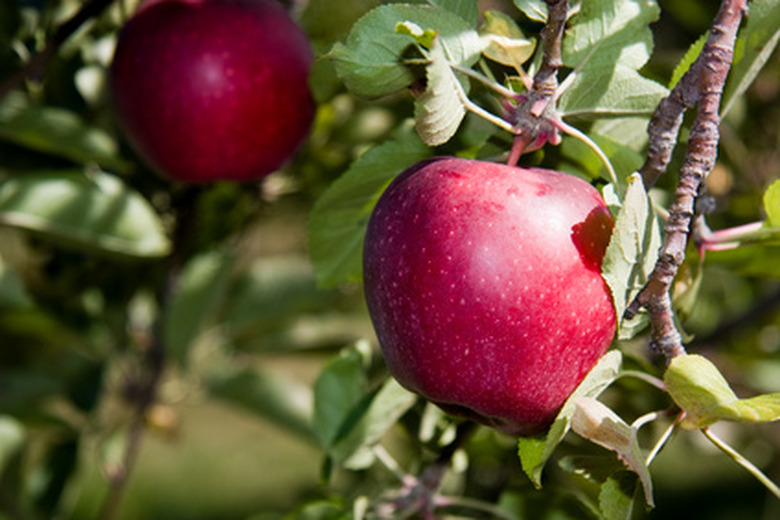Importance Of Plant Classification
The Greek philosopher Aristotle first began classifying plants according to their shared characteristics. Carl Linnaeus, a Swedish botanist, refined Aristotle's thinking into a classification system, variations of which are still used today. Taxonomy, the science of classification, enables us to know the heritage and details of a plant at a glance, avoiding the confusing duplication of popular names. To fully appreciate the importance of plant classification, you need to know how botanical taxonomy works.
Plant Divisions
Most botanists using versions of the basic scheme devised by Linnaeus divide the plant kingdom into 12 broad divisions, from the most simple plants to the more complex.
Four divisions of bryophytes include small plants that propagate by spores but have parts that resemble leaves, stems and roots. These include hornworts, liverworts and mosses.
- The Greek philosopher Aristotle first began classifying plants according to their shared characteristics.
- Four divisions of bryophytes include small plants that propagate by spores but have parts that resemble leaves, stems and roots.
Four divisions of seedless plants include club mosses, ferns and horsetails.
Four divisions of gymnosperms describe plants that do not have flowers or fruit containing seeds; these plants include firs, hemlocks, pines, spruces and other trees with cones.
The angiosperm division of plants with seeds includes monocotyledons and dictyledons. Monocotyledons are grasses, lilies, orchids, palms and other plants with one seed leaf and leaves that have parallel veins. Dicotyledons are cherry trees, daisies, coffee plants, maples and other plants that have two seed leaves and leaves with netted veins.
Sub-Divisions
Each of the 12 broad division of plants is further divided into descriptive groups, each of which contains more detail than the previous level. Plant classes, the level beneath divisions, are split into plant orders. Plant orders are divided into plant families. Plant families are divided into plant genera that are in turn divided into plant species, the basic and most familiar unit of plant classification.
- Four divisions of seedless plants include club mosses, ferns and horsetails.
- Four divisions of gymnosperms describe plants that do not have flowers or fruit containing seeds; these plants include firs, hemlocks, pines, spruces and other trees with cones.
There are several systems of classifying plants by their characteristics, so the names of these classifications vary. The classification of most importance to gardeners in identifying a particular plant is its binomial name.
Binomial Classification
The botanical name of a plant found in popular plant references has two parts, genus and species; both are given in Latin. The name of the genus begins with a capital letter; the name of the species begins with a small letter.
Genus is the generic or general name. For example, Coffea is the Latin form of kahwa, the Arabic word for coffee. The species, meaning specific, is a name that describes the genus. Coffea arabica means coffee that originated in Arabia. This botanical name is unique. No other plant has that name.
- There are several systems of classifying plants by their characteristics, so the names of these classifications vary.
- The botanical name of a plant found in popular plant references has two parts, genus and species; both are given in Latin.
The marsh marigold (Caltha palustris) has 280 known popular names; thus, using the correct botanical name eliminates confusion. There is only one Caltha palustris.
Binomial Suffixes
The binomial classification of plants are often followed by suffixes that give additional information.
A plant variety is one that varies only slightly from a species. The Latin varietas, meaning variety, is usually abbreviated to var. The common honeylocust is Gleditsia tricanthus. The thornless honeylocust is Gleditsia tricanthus var. inermis.
- The marsh marigold (Caltha palustris) has 280 known popular names; thus, using the correct botanical name eliminates confusion.
A difference in the shape of the leaves or color of flower might warrant the addition of forma, or form, sometimes abbreviated f. Astrophytum myriostigma forma quadricostata is a kind of cactus with a shape that has four corners; this can also be written Astrophytum myriostigma f. quadricostata.
A cultivar is a natural or hybrid cultivated plant that can be reproduced by seed or vegetatively. It is preceded by cv. or is enclosed in single quotation marks. Astrophytum myriostigma cv. Onzuka or Astrophytum myriostigma 'Onzuka' are both correct ways of writing the Onzuka cultivar of this cactus.
Evolving Classification
The system of classifying plants according to shared characteristics begun by Aristotle and refined by Linnaeus and others is subject to ongoing challenge by botanists who are tracing the evolution of plants through their DNA. The traditional system remains useful for gardeners who are researching the characteristics and growing habits of plants they might want to cultivate. On a practical level, gardeners begin with the binomial name of a plant.
- A difference in the shape of the leaves or color of flower might warrant the addition of forma, or form, sometimes abbreviated f. Astrophytum myriostigma forma quadricostata is a kind of cactus with a shape that has four corners; this can also be written Astrophytum myriostigma f. quadricostata.
- Onzuka or Astrophytum myriostigma 'Onzuka' are both correct ways of writing the Onzuka cultivar of this cactus.
